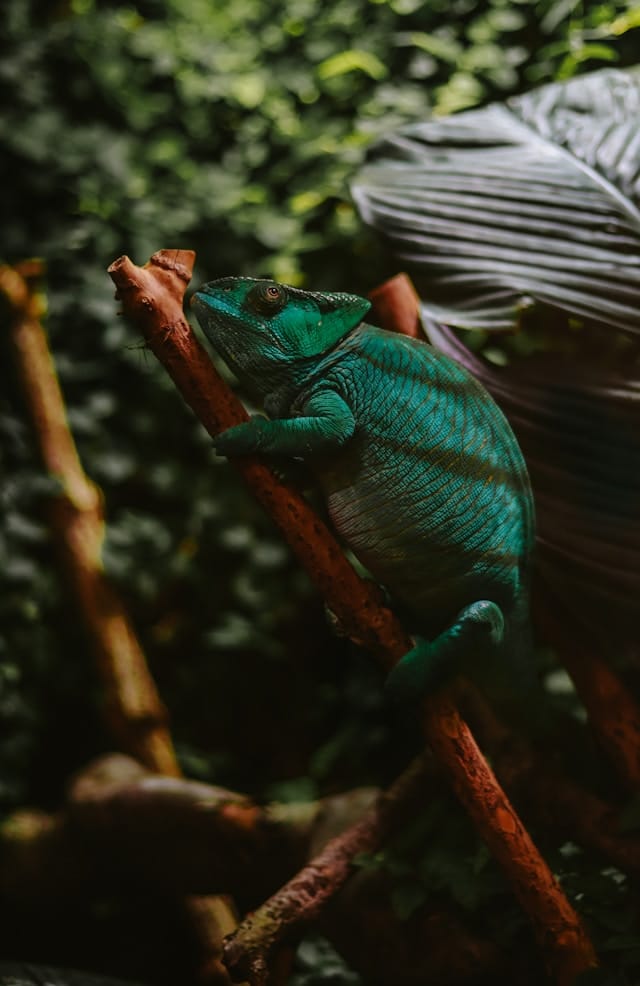What’s the Most Effective Setup for a Crested Gecko Bioactive Terrarium?

As you venture into the world of reptile keeping, you might find yourselves enamored with the crested gecko, a species with vibrant colors and fascinating behaviors. However, to ensure the well-being of your gecko, it’s crucial that their enclosure mirrors their natural habitat as closely as possible. This is where a bioactive terrarium comes in handy, incorporating live plants and a natural substrate to create a dynamic, self-cleaning environment. But what constitutes the most effective setup for a crested gecko bioactive terrarium? Let’s delve deeper into the elements of a successful vivarium, from the substrate and plants to water and lighting.
The Ideal Substrate for Crested Geckos
The foundation of any great bioactive terrarium is the substrate. It not only contributes to the aesthetics of the enclosure but also plays a vital role in maintaining the right humidity and temperature levels. For crested geckos, a blend of organic peat moss, coco coir, and sphagnum moss makes an excellent substrate. This mix retains moisture well, thereby helping to regulate humidity.
A lire aussi : How to Train a Shih Tzu to Accept Ear Cleaning Without Resistance?
Remember to layer the substrate appropriately. Ideally, you should have a false bottom layer of drainage stones or hydro balls. This is followed by a layer of mesh to separate the substrate from the drainage layer, and then the substrate itself.
In a bioactive setup, it’s also necessary to include a layer of leaf litter on top of the substrate. The leaf litter provides a source of food for the clean-up crew – the beneficial microorganisms and bugs that help break down waste and keep the terrarium clean.
A lire également : How to Use Interactive Feeders to Control Overeating in Labrador Retrievers?
Planting in a Bioactive Vivarium
Incorporating live plants in your crested gecko’s enclosure not only enhances the overall aesthetic but also serves practical purposes. They help maintain humidity, provide cover, and create climbing opportunities for your geckos.
When choosing plants, opt for those that thrive in similar conditions as crested geckos, with a preference for high humidity and relatively low light. Bromeliads, ferns, philodendrons, and pothos are great options. These plants are robust, easy to care for, and can withstand the activity of your gecko.
To protect the roots and ensure longevity, it’s advisable to plant in pots buried in the substrate rather than planting directly. This way, the geckos can’t burrow into the roots and the clean-up crew will leave the plant alone.
Water and Humidity Control in the Enclosure
Crested geckos thrive in a high-humidity environment. Maintaining the right levels can be achieved by misting the enclosure with water daily. Besides raising humidity, this also provides the gecko with a water source, as they often prefer to drink water droplets from plant leaves or the terrarium walls.
A bioactive enclosure will also naturally maintain higher humidity due to the live plants and moist substrate. However, to prevent the substrate from becoming waterlogged, ensure a good drainage system at the bottom of the terrarium.
Lighting and Temperature
While crested geckos do not require special UVB lighting, providing a low level of UVB light can still benefit the overall health and wellbeing of these reptiles. It aids in the synthesis of vitamin D3, which is essential for calcium absorption.
The ideal temperature range for crested geckos is between 70-80°F. Avoid using heat lamps as geckos are sensitive to high temperatures. Instead, use a low-wattage ceramic heat emitter if the enclosure temperature drops too low. The placement of the terrarium in your home can also affect its temperature. Keep it away from direct sunlight and heating vents to prevent overheating.
A Naturalistic Background for Climbing
Finally, a naturalistic background not only adds to the visual appeal of the terrarium but provides more climbing surfaces and hiding places for your gecko. It can be made from cork bark, foam, or other reptile-safe materials and should be securely attached to the back of the enclosure.
You can also fix climbing branches and vines, ensuring they are sturdy and well-anchored to avoid any accidents. Considering crested geckos are arboreal, they will make use of the vertical space and enjoy the added complexity.
Remember, the goal of a bioactive terrarium is to replicate the natural environment of crested geckos as closely as possible. And this involves more than just providing the right substrate or plants. It’s about creating a dynamic, living ecosystem that not only looks good but caters to the species’ behavioral and physiological needs as well.
Integrating a Cleanup Crew in a Gecko Bioactive Enclosure
A crucial element in maintaining a successful bioactive terrarium for your crested gecko revolves around integrating a cleanup crew. This typically consists of beneficial microorganisms and invertebrates, such as springtails and isopods. Their role is to break down organic waste, much like they would in a natural ecosystem, and recycle it back into the substrate.
Springtails and isopods are perfect for this role because they are harmless to your gecko, reproduce quickly, and thrive in the same environmental conditions. They feed on decaying plant matter, leftover food, feces, and even shed skin. By doing so, they prevent harmful fungi or bacteria from colonizing the enclosure, which could potentially harm your gecko.
This cleanup crew also helps to aerate the substrate by burrowing and moving through it, preventing it from becoming compact and waterlogged. The leaf litter layer on top of the substrate also serves as a food source for these critters, ensuring they have a steady supply of nutrients to sustain them.
When introducing the cleanup crew into your bioactive terrarium, be sure to create an environment that supports their survival. This includes maintaining the right humidity and temperature, as well as ensuring there’s enough leaf litter and organic waste for them to feed on.
The Benefits of a Bioactive Enclosure for Crested Geckos
Moving beyond the practical aspects of setting up a crested gecko bioactive terrarium, it’s equally important to acknowledge its inherent benefits. Creating a bioactive enclosure for your crested gecko is much more than just a hobby; it’s an opportunity to significantly enhance your reptile’s quality of life.
Given that crested geckos are arboreal, they thrive in an environment that has ample vertical space and climbing opportunities. By incorporating live plants, branches, and a naturalistic background, you provide your gecko with a dynamic, three-dimensional habitat that encourages natural behaviors like climbing, foraging, and exploring.
Moreover, a bioactive enclosure provides a more enriching visual and olfactory experience for your gecko. The live plants, leaf litter, and diverse textures stimulate your reptile’s senses, creating a more engaging and stimulating environment.
Additionally, a bioactive setup functions as a self-cleaning and self-sustaining ecosystem. The cleanup crew works relentlessly to break down waste and recycle nutrients, reducing the frequency of substrate changes and creating a healthier environment for your gecko.
Bioactive enclosures, therefore, offer a more holistic and naturalistic approach to reptile keeping, closely mirroring the conditions that crested geckos would encounter in their native habitats.
Conclusion
In conclusion, setting up a crested gecko bioactive terrarium involves careful consideration of several factors. This includes choosing the right substrate, selecting suitable live plants, maintaining the correct water and humidity levels, providing adequate lighting and temperature, and integrating a robust cleanup crew. A bioactive enclosure not only creates a beautiful, vibrant habitat but also promotes the natural behaviors and wellbeing of crested geckos.
However, it’s essential to remember that every gecko is unique, and what works for one may not necessarily work for another. Always monitor your gecko’s behavior and health and make adjustments as necessary. The effort put into creating and maintaining a bioactive terrarium will be rewarded by the joy of observing your crested gecko thrive in an environment that closely mirrors its natural habitat.
